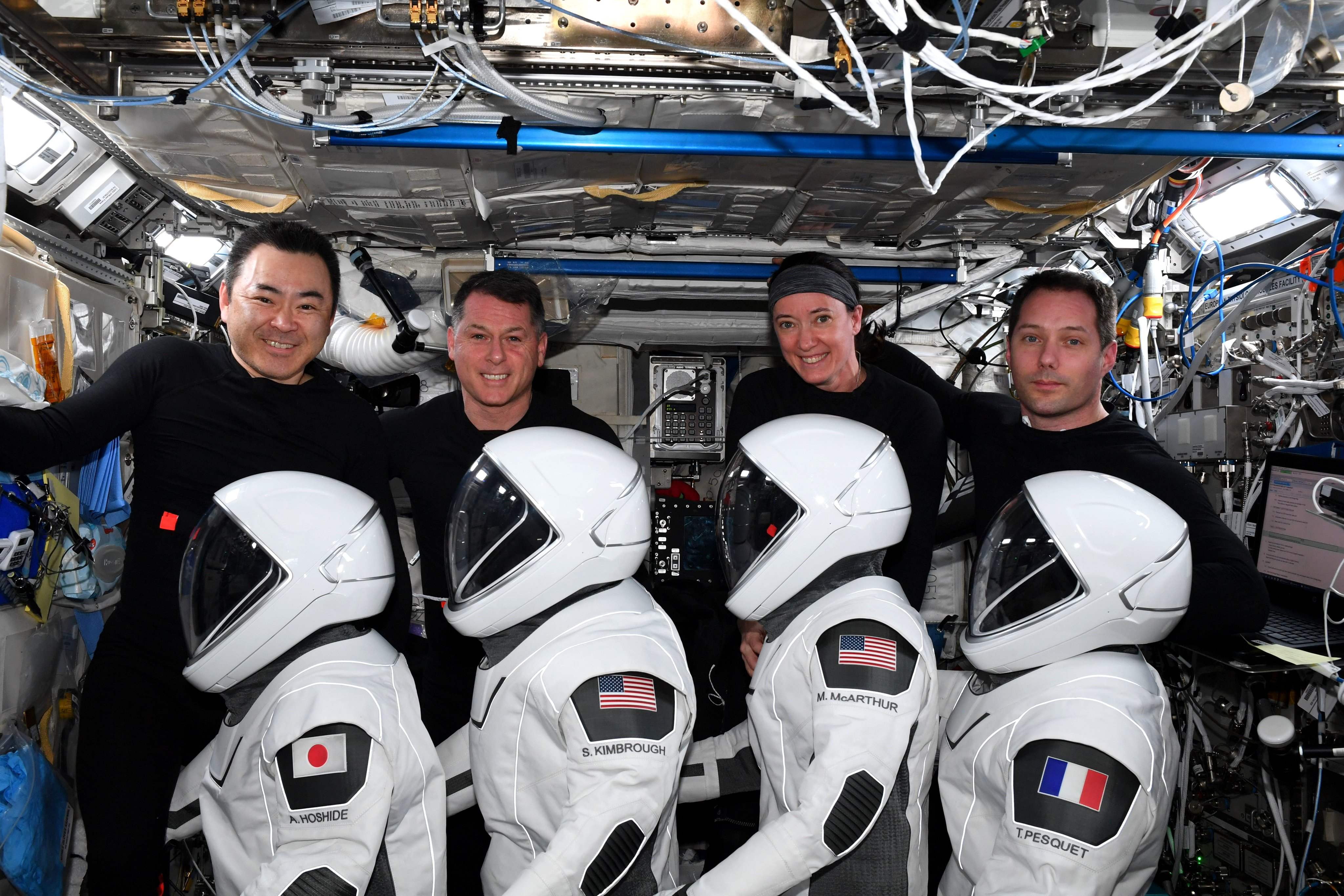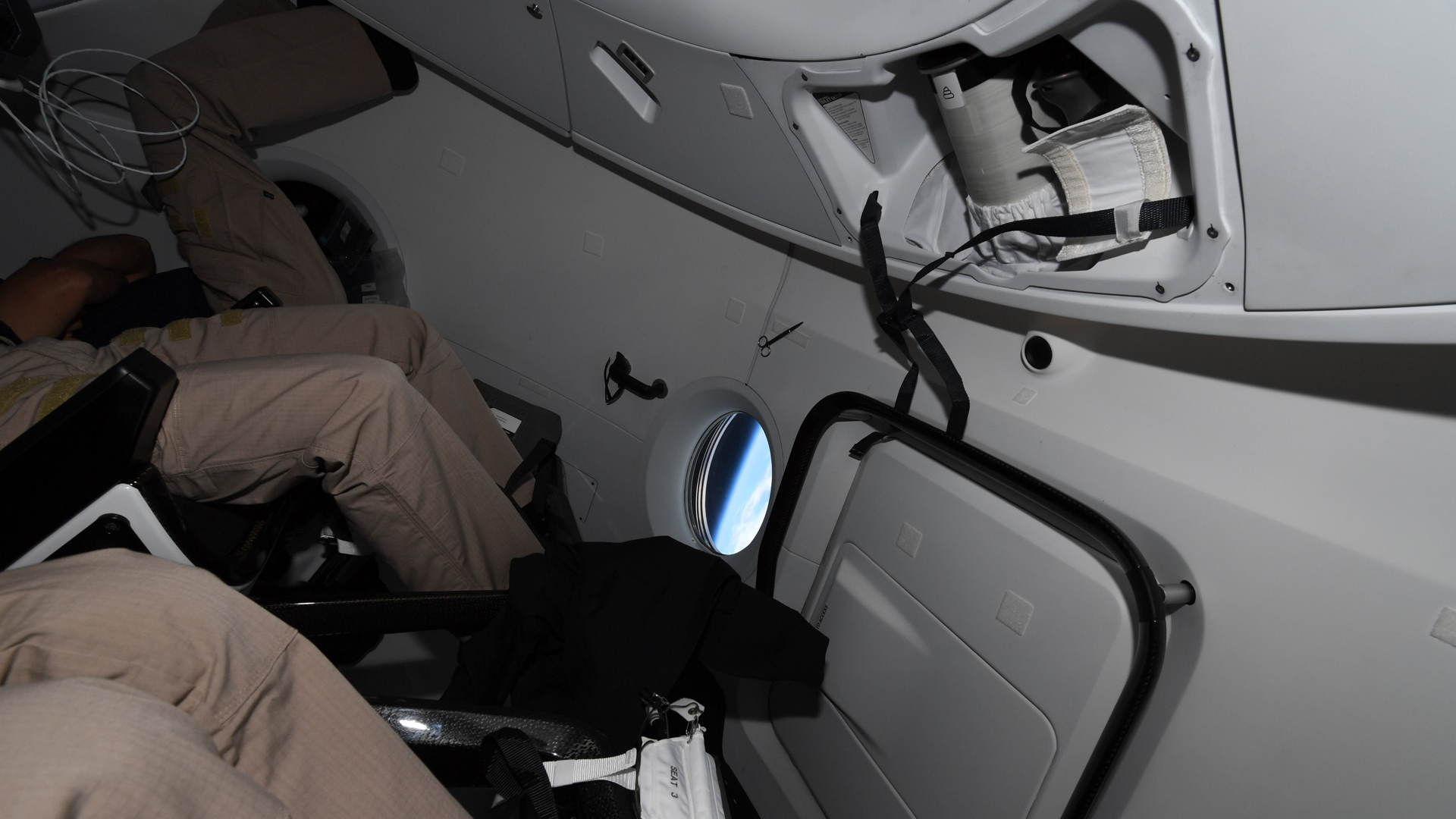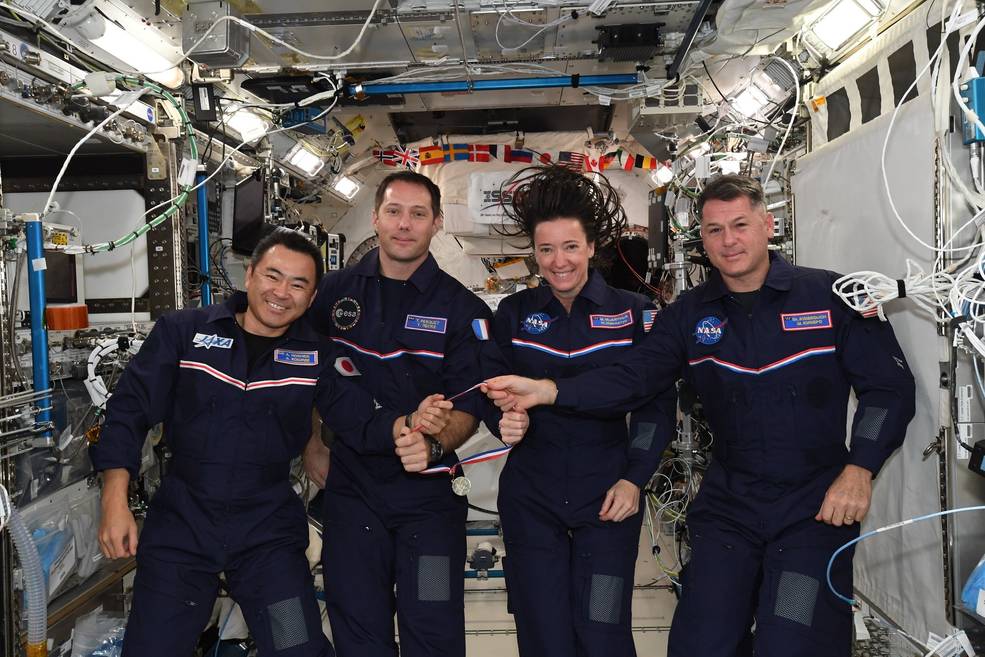The astronauts of SpaceX's Crew-2 mission talk toilet trouble in space and more, but when will they land?

CAPE CANAVERAL, Fla. — Thanks to Mother Nature, NASA is weighing when to bring the four astronauts of its Crew-2 mission with SpaceX home, even as their replacements wait on Earth for a launch of their own.
The Crew-2 astronauts, NASA's Shane Kimbrough and Megan McArthur, Akihiko Hoside of Japan and Thomas Pesquet of France, first launched to the International Space Station (ISS) in April on a six-month mission. According to agency officials, the crew could come home aboard their SpaceX Dragon capsule as early as Sunday (Nov. 7), if weather permits.
"We don't know exactly when we're going to come back home," Pesquet, who represents the European Space Agency, told reporters on Friday (Nov. 5). "But we can say for sure that sooner rather for rather than later."
Live updates: SpaceX's Crew-2 and Crew-3 astronaut missions
The uncertainty is due to the fact that NASA has yet to get Crew-2's replacements off the ground. That group of Crew-3 astronauts — NASA's Raja Chari, Tom Marshburn, and Kayla Barron, along with European Space Agency's Matthias Maurer — were set to blast off on Oct. 31, but the launch has been delayed due to poor weather conditions along the rocket's flight path and a minor medical issue that popped up with one of the crewmembers.
Weather conditions here at the Cape are dismal, meaning that the agency is realistically looking at mid-week next week before they can get Chari, Marshburn, Barron, and Maurer off the ground.
This means that NASA is going to have to bring back the Crew-2 astronauts and do a virtual handoff of the reigns to the ISS. Kimbrough says that it's not really a big deal, but ideally, the Crew-2 astronauts would give the next crew some housekeeping tips and tricks.
"A lot of that handover time is just showing little things on living in space — the things we don't get trained on, like eating and going to the bathroom and sleeping and those kinds of little tidbits that we would pass on to the next crew if they were here," he told reporters. "And if we're not here, then Mark Vande Hei is certainly capable to do that and get that next crew up to speed." (Vande Hei, another NASA astronaut on the station, is currently in the middle of a nearly yearlong trip to the station.)
Get the Space.com Newsletter
Breaking space news, the latest updates on rocket launches, skywatching events and more!
Toilet troubles in space

The crew has been busy preparing for their trip home, inspecting both their Dragon capsule and the spacesuits that will protect them on the way back to Earth.
During that inspection process, the crew found evidence of a leaky toilet that was first noticed on a different SpaceX capsule used on its private Inspiration4 mission, which launched in September. (As part of that mission, four civilians launched on a three-day trip around the Earth in order to raise money for St. Jude Children Research Hospital.)
SpaceX has since redesigned its toilet so that crews can use it without fear of leaks. However, that does not include Crew-2's Dragon Endeavor, which is currently docked to the ISS. To that end, NASA and SpaceX have asked the crew not to use the toilet but instead to rely on diapers if they need to relieve themselves during the trip home.
"Yes, we are unable to use the toilet on Dragon for the return trip, and of course, that's suboptimal," McArthur told reporters when asked about the toilet dilemma. "But, you know, spaceflight is full of lots of little challenges and this is just one more that we'll encounter and take care of in our mission."
"So we're not too worried about it. I think we have a good plan going forward."
Kimbrough said that the crew had the opportunity to inspect Dragon Endeavor a few times, and even to look under the floorboard to see if the same leak occurred in their Dragon as it did in Dragon Resilience, which launched the Inspiration4 mission.
"We got to get under the panels in the floor, so to speak a few times with different kinds of video cameras, to give the SpaceX and NASA teams some data to see if it was anything like the Inspiration4 vehicle or not," he said. "Then they came up with the plan after seeing some of the videos [we recorded].
"They've done a bunch of testing in the last month, you know, four to six weeks or so, to clear the vehicle," he added. "So we're very happy about that."
Tasty taco treats
One of the big projects the crew was working on while in space was a plant growth experiment that looked at how Hatch chile peppers grow in microgravity. Last week, the crew was able to harvest their first crop and enjoy some tasty tacos with a little extra spice thanks to the freshly grown peppers.
"It's been a really nice, ongoing experiment for us," McArthur said. We can come and check on the plants, and occasionally, when someone would get inside the habitat, we could come and smell the plants and see the chiles growing."
"So, it's really been a nice morale boost as well as an interesting science project,' she said, adding that they were able to sample both green and red chile.
Friday Feasting! After the harvest, we got to taste red and green chile. Then we filled out surveys (got to have the data! 😁). Finally, I made my best space tacos yet: fajita beef, rehydrated tomatoes & artichokes, and HATCH CHILE! https://t.co/pzvS5A6z5u pic.twitter.com/fJ8yLZuhZSOctober 29, 2021
Despite the fact that there was no Halloween launch this year, the Crew-2 astronauts still had their own version of trick-or-treating on station, with a few treats provided by the folks on the ground. According to Kimbrough, Darth Vader even visited them, which was a surprise.
Earlier in the month, after arriving at Kennedy Space Center, Crew-3's Kayla Barron said that fellow NASA astronaut, Mark Vande Hei, had some costumes for them to wear on station, but that plan was sidetracked a bit as the launch was postponed.
Related: Halloween in space! These wild astronaut costumes are out of this world
A mission to remember

Pesquet, Kimbrough, McArthur, and Hoshide all agree that their time on station was memorable and challenging and that they're trying to soak up every minute they have left on the space station.
"As we're preparing to leave it's kind of a bittersweet feeling because we might never come back to see the ISS," he said. "And it really is a magical place."
Pesquet said that seeing the Earth from space, and doing important research that benefits everyone here on Earth is a dream come true. "To me, that's what dreams are made of," he said. "And I'm very thankful that people dreamt the ISS some time ago and then went ahead and worked hard to make it happen and to build it for the benefit of everyone."
The Crew-2 astronauts, who were part of Expeditions 65 and now Expedition 66, were really able to get through a ton of science experiments while in space. This achievement is one of the main goals of the Commercial Crew program: to provide an extra crewmember so that more time is devoted to research.
Pesquet, the first French commander of the station, says he has one wish — to keep the ISS in top shape and flying for years to come. He said that he and his crewmates were happy to have played a small role in its upkeep, and Pesquet and Kimbrough worked together to install a new set of solar arrays that will help keep ISS powered for years to come.
Although an official return date has yet to be announced, NASA says the earliest the crew can come home is Sunday, Nov. 7. Where they splash down will be determined after they undock from the space station and have a better idea of weather conditions.
Follow Amy Thompson on Twitter @astrogingersnap. Follow us on Twitter @Spacedotcom or Facebook
Join our Space Forums to keep talking space on the latest missions, night sky and more! And if you have a news tip, correction or comment, let us know at: community@space.com.

Amy Thompson is a Florida-based space and science journalist, who joined Space.com as a contributing writer in 2015. She's passionate about all things space and is a huge science and science-fiction geek. Star Wars is her favorite fandom, with that sassy little droid, R2D2 being her favorite. She studied science at the University of Florida, earning a degree in microbiology. Her work has also been published in Newsweek, VICE, Smithsonian, and many more. Now she chases rockets, writing about launches, commercial space, space station science, and everything in between.









